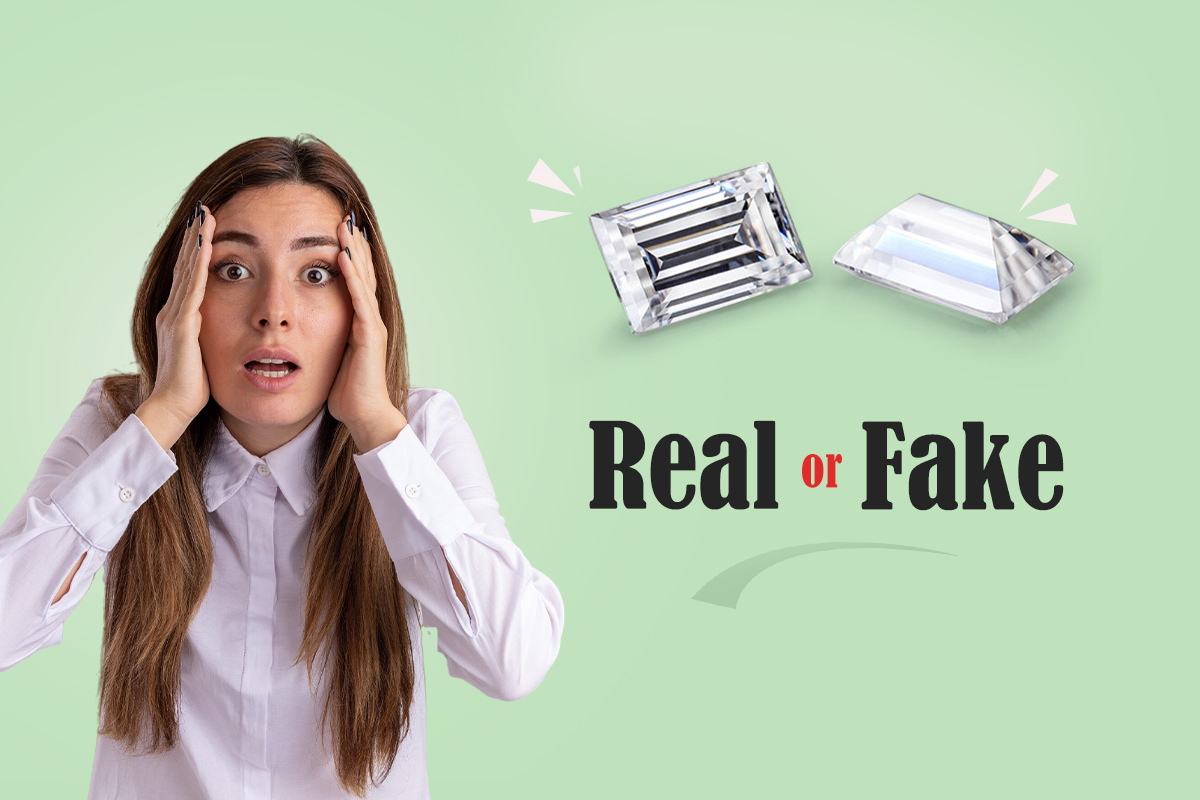Real Diamonds vs Fake Diamonds: How to Identify the Difference
Here is How To Tell the Difference Between Real Diamonds vs Fake Diamonds. Have you ever needed to find out whether the diamond you are looking at is real or fake? It can be very difficult for somebody who isn’t savvy with diamonds to tell the difference, but here are some tips that may help.
How to spot a difference between Real Diamonds vs Fake Diamonds
If you really can’t tell a fake from the real thing, then it’s best to just avoid buying one. If you’re just curious about the difference, here are some things to look out for. Diamonds that are too wide or too narrow A diamond should be cut so that it has light shining all around the edge of the diamond, and shouldn’t have a lot of dark corners.
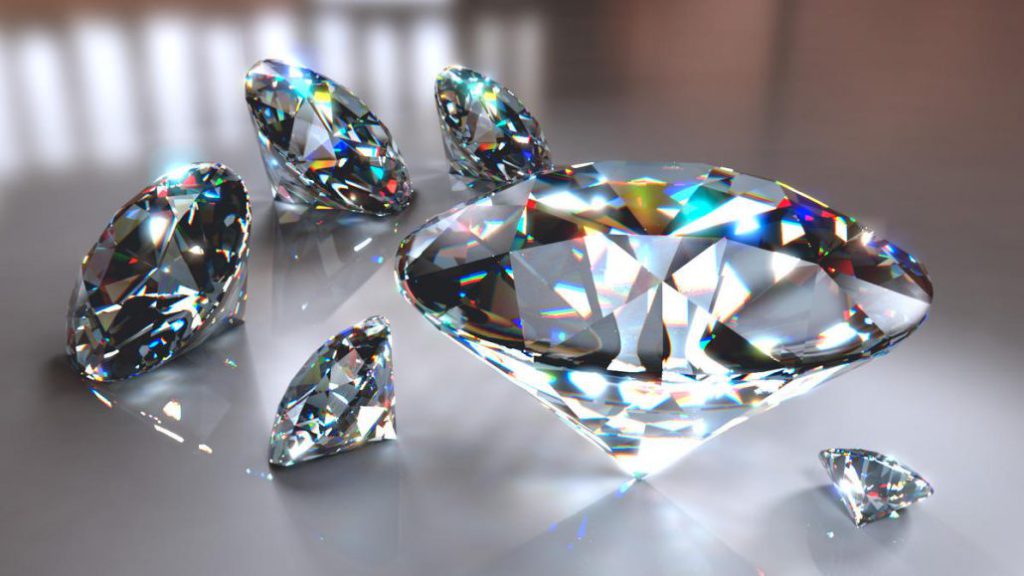
A diamond should be cut so that it has light shining around all the edges of the diamond, and shouldn’t have a lot of dark corners. Diamonds that are too polished: A natural diamond will have some flash or rough edges. Fake diamonds are nearly impossible to distinguish from real ones when they’re polished to perfection. A natural diamond will have seen that flash or rough edges. Fake diamonds are nearly impossible to distinguish from real ones that were polished to perfection.
Fog Test
Diamonds that are too cloudy won’t reflect any light and will appear dull. A real diamond should always be able to reflect some light even if it is a cloudy day.
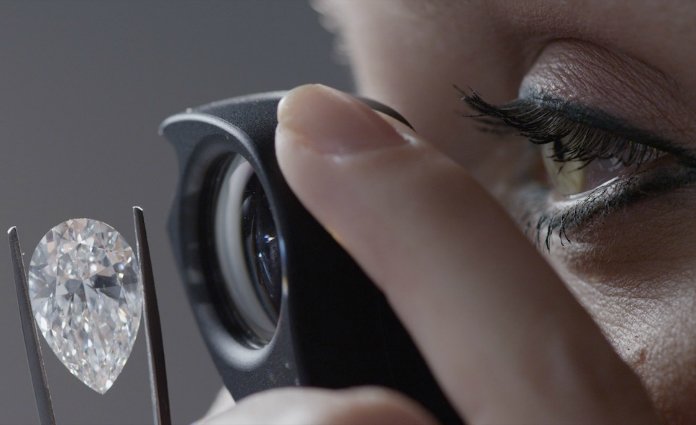
Diamonds that are too cloudy won’t reflect any light and will appear dull. A real diamond should always be able to reflect some light even if it is a cloudy day. Diamonds that can’t be polished: Fake diamonds will have lots of small imperfections on them, while a real one shouldn’t show any imperfections at all. Being perfect isn’t a good thing either. Real diamonds still have some facets, so they aren’t completely smooth, but the difference is pretty subtle. Fake diamonds will also have a “halo effect”
if you hold a diamond up to the light and you can see a halo-like effect around the top of it, then it’s probably fake. However, when a real diamond is set in a ring or other piece of jewelry, you won’t be able to see this halo anymore because the setting will cover it up.
Blue tint test
Fake diamonds can also have a blue tint to them. If your diamond has a blue tint, then it’s not real.
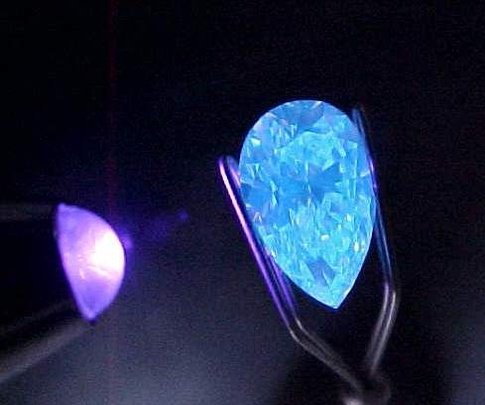
Again, a real diamond will still be able to reflect some light even if it has a tint to it.
Diamonds that are fluorescent
A real diamond will stay the same color no matter what time of day it is. A fake diamond, on the other hand, will change colors and appear brighter in fluorescent light.
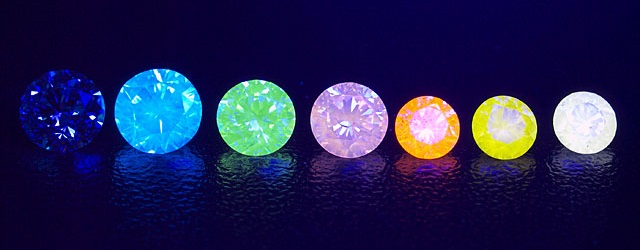
Real diamonds will stay the same color regardless of how bright the room is. Fake diamonds will appear brighter in fluorescent light than normal light. even if they bright more under the fluorescence light it means it was the fake one.
Heat the stone and see if it shatters
A real diamond will not show any reaction towards heat. take a glass of cold water and heat the diamond with the lighter for 5 seconds then immediately drop the diamond into the water. if it shatters it is made up of weaker components and it wasn’t the true diamond. because true diamonds do not respond towards heat and they won’t shatter at this high temperature of the heat. A synthetic fake diamond will react towards heat normally as any other metal does.
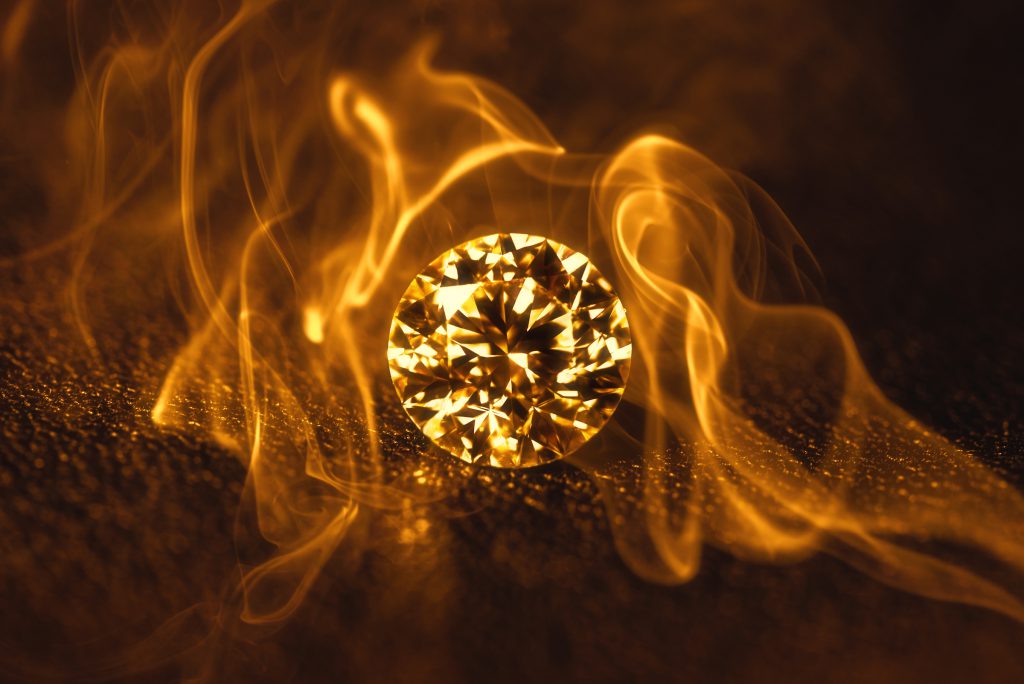
Specific Gravity Test
Are you able to identify a specific gravity test for fake diamonds? You can use a beaker and water. add water into the beaker then put the fake diamond and see whether it float or sink.
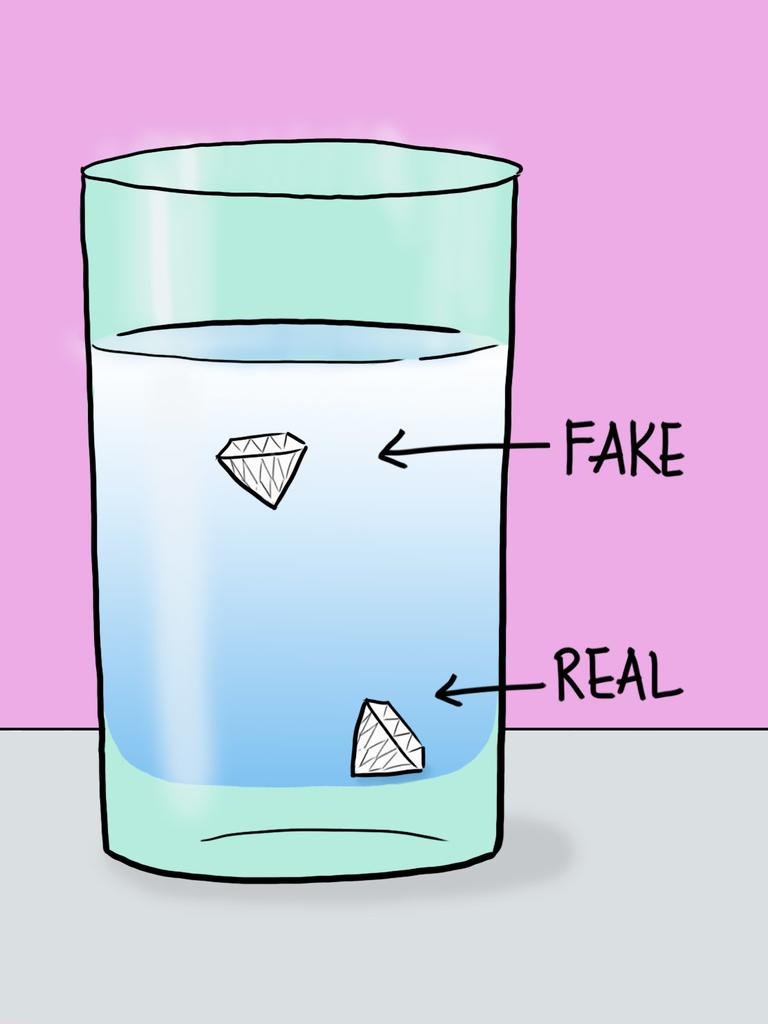
if it sinks then it is not genuine but if it floats then it indicates that you are having a fake diamond. The specific gravity of natural diamonds is 3 to 4 times heavier than gold.
UV light test
put the diamonds under the UV light and see the reaction that happens. some diamonds may emit a blue-colored glow and not all of them.
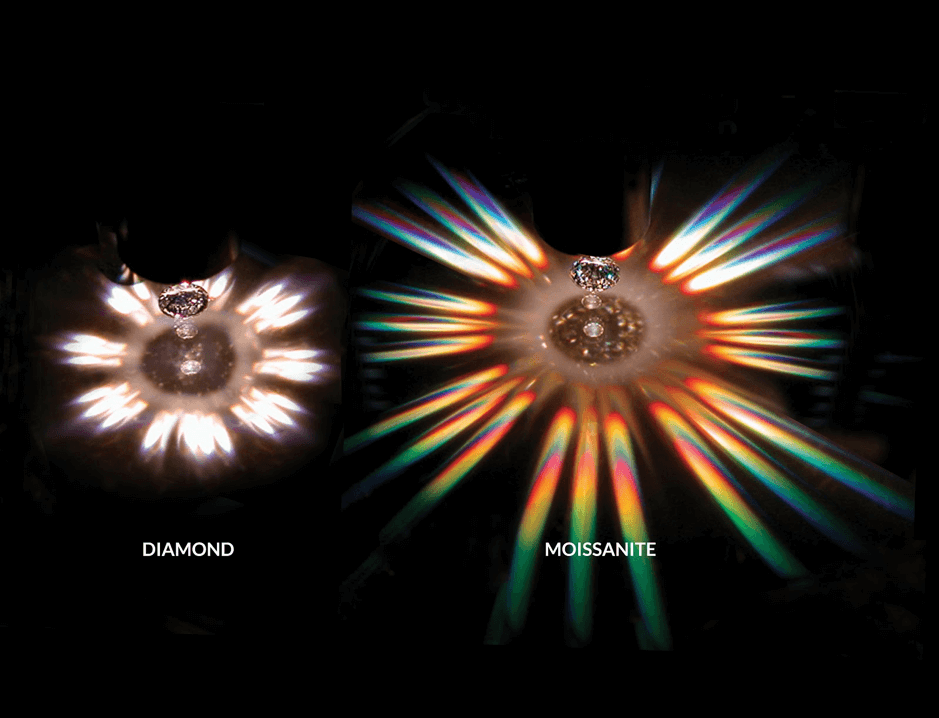
this result doesn’t identify properly that the diamond is fake this test is not ultimate it is better to have a diamond expert or jeweler with their latest equipment.
The dot test
place a sheet of white paper on the surface and make a dot on it. Now place a diamond on it then watch whether the dot is gone or not. if the dot is still visible then it indicates that it’s not a real diamond.

The flash test
It is possible to check in this way whether the stone is real. Place the stone on white paper and hold with your hand below it at an angle of 45 degrees and look at the light reflection through its bottom.
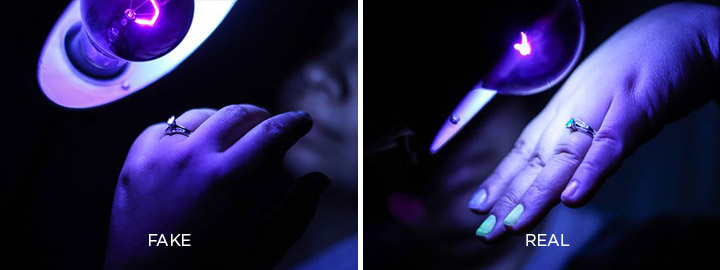
The Fog Test or the Breath Test
To check the authenticity of the diamond, you must put a diamond in front of your eyes and breath on it. If the diamond is fake, then the light from your breath will not penetrate into the stone. If it is real, then you will see the shine coming from inside.
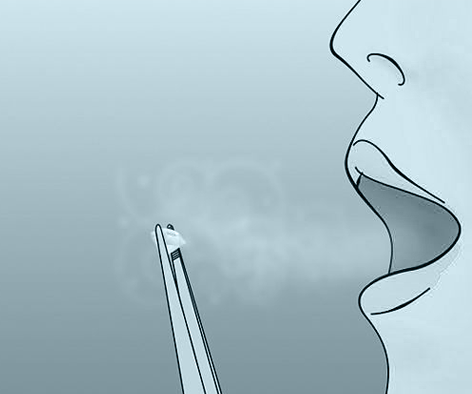
The same test is good to check if the stone is real or fake because diamonds have a lot of flaws and they are not perfect.
Diamond Certificate of Authenticity
A grading authority such as the GIA, AGS, or EGL Switzerland will issue a certificate of authenticity to the buyer. The certificate is important to make sure that the buyer’s diamond is genuine because it will show all the information about the diamond and it will give you the guarantee that you are buying a genuine diamond.
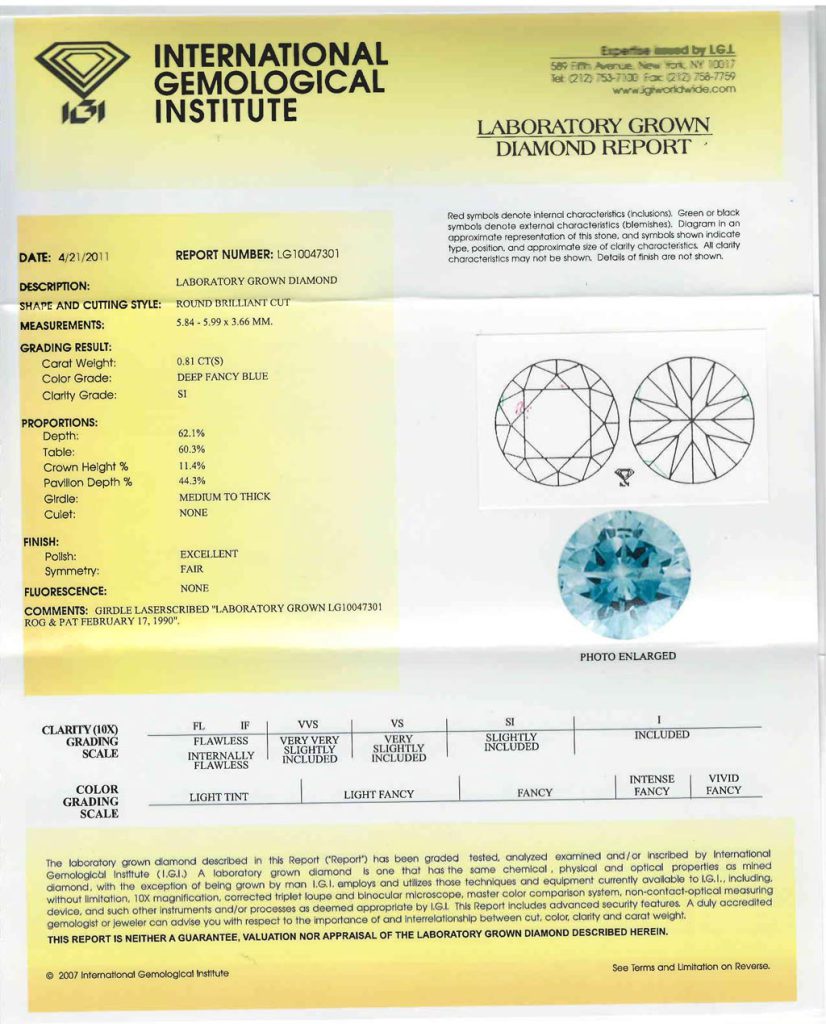
A certificate will give you the security that the stone you are buying, is real and it is from a certified dealer.
Terms used in the certification process:
The Diamond’s Clarity and Color:


When it comes to clarity and color, lab-created diamonds are very hard to tell apart from natural ones. Lab-created diamonds are sometimes made with a lower clarity than naturally grown ones, but the difference is so small that you won’t be able to see it unless you hold it up close.
Another trick for telling if a diamond is real or fake is to check the color. Natural diamonds have impurities that give them the color they are. Synthetic diamonds are nearly colorless.
When you first get the diamond, compare it side by side with another that you know is real to see which one is darker.
The Diamonds Carat Weight:

If the diamond is weighed on a scale, then it’s easy to tell if it is real or fake. A diamond will weigh 2.6 times heavier than other gemstones of the same size.
When it comes to fake diamonds, they are usually made of cubic zirconia and weigh nearly the same as a real diamond. If they don’t have any weight at all, then it’s most likely a fake diamond.
If your diamond doesn’t have weight, then it is most likely not a real diamond. If you do have doubts about your purchase, ask an appraiser to check on it. The appraiser will be able to tell you if the diamond is real or fake.
4) the Diamond Cut:
If the diamond is a synthetic one, it won’t have any sharp edges or points. Real diamonds are cut with sharp edges and points because it is difficult to do so without cutting in the corners.

FAQs
What is the Difference Between a Real Diamond and Synthetic?
The difference between a synthetic diamond and a real diamond is the price. A real diamond is more valuable and looks brighter than a synthetic diamond. In addition, Natural diamonds come from the Earth, while synthetic diamonds are made in laboratories. Synthetic diamonds are cheaper than natural ones.
How do I know if a diamond is real?
The first way to identify a real diamond is by its cut. All diamonds cut for jewelry have their speed and brilliance enhanced by this process. The second method to confirm a diamond is real is its durability. A natural diamond has no flaws, which means it will not chip, scratch, or break easily. A fake diamond will crack or shatter when dropped or hit against another object.

